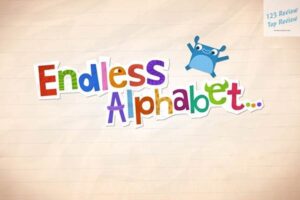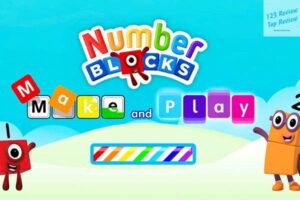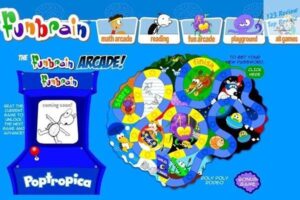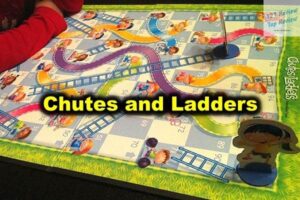Candy Land is more than just a board game; it’s a rite of passage for many children, introducing them to the joys of games while providing a colorful, whimsical escape into a world of candy-coated adventures. Since its creation in 1948, Candy Land has become a beloved staple in family game collections around the world.
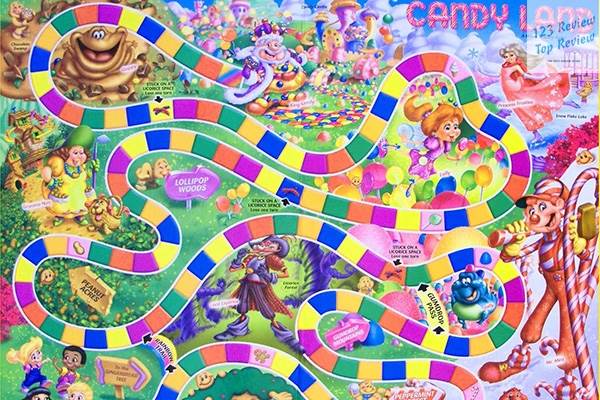
In this article, 123 Review takes a deep dive into the history, gameplay, and enduring appeal of this iconic game, providing a comprehensive look at why Candy Land continues to capture the hearts of players young and old.
Overview of Candy Land Game
Candy Land has earned its place as one of the most iconic and enduring board games for children. Its simple mechanics, vivid visuals, and imaginative world make it a favorite among preschoolers, while its nostalgic value continues to charm adults who played the game in their own childhoods. The game requires no reading skills and is based purely on luck, making it accessible to even the youngest players and offering a level playing field for all.
History of Candy Land
Candy Land was created in 1948 by Eleanor Abbott, a schoolteacher recovering from polio in San Diego, California. Abbott designed the game as a way to entertain children who were also recovering from the disease. She submitted the game to Milton Bradley (now a part of Hasbro), who saw its potential and brought it to market. The game’s immediate success was a testament to its universal appeal, and it quickly became a household name.
Over the decades, Candy Land has evolved in both design and concept. The original game featured a simpler path with fewer characters and special spaces. As the game grew in popularity, new characters and regions were introduced, enriching the game’s narrative and making it even more engaging for young players. The addition of characters like Lord Licorice and Princess Frostine provided a sense of adventure and rivalry that added depth to the gameplay.
Evolution of Game Versions
Since its inception, Candy Land has seen numerous updates and special editions. Early versions of the game were fairly straightforward, with basic artwork and a simple linear path. However, as the game’s popularity soared, new versions were released with updated artwork, more elaborate characters, and enhanced board designs.
In the 1980s, Candy Land received a major redesign, introducing characters with more personality and adding new locations on the board. This version included well-known characters like Mr. Mint and Grandma Nutt, who added to the game’s charm. The game’s artwork was also refreshed to be more colorful and visually appealing to children.
In recent years, themed editions of Candy Land have been released, tying into popular movies, TV shows, and franchises. For example, you can find versions of Candy Land featuring characters from Disney movies or popular animated series. These versions keep the game relevant to new generations of children while preserving the core elements that made it a classic.
Gameplay Mechanics
At its heart, Candy Land is a game of chance. The gameplay is straightforward, with players drawing cards that dictate their movement along a colorful path. Despite its simplicity, the game’s design is clever, keeping young children engaged and excited as they race to the finish.
Setup and Components
Candy Land’s components are simple yet visually appealing, designed to capture the attention of young children. The game includes:
- A brightly colored game board: The board features a winding path that leads players through various candy-themed regions, from the Peppermint Forest to the Gumdrop Mountains and beyond. The path is divided into color-coded spaces, with special locations marked by specific icons.
- Game cards: The deck of cards is the heart of the game. Each card features a color or character that determines the player’s next move. The colors correspond to the spaces on the board, while character cards can send players to specific locations, either advancing them forward or setting them back.
- Game pieces: Players each choose a marker to represent them on the board. These pieces are often designed as simple, colorful gingerbread men or similar figures that appeal to children.
Setting up the game is quick and easy, requiring only the laying out of the board and the shuffling of the cards. Once the pieces are placed at the start of the path, the game is ready to begin.
Rules and Objectives
The objective of Candy Land is to be the first player to reach King Kandy’s Castle at the end of the path. Unlike more complex board games, Candy Land does not require strategic thinking or planning; it’s purely a game of chance, determined by the cards players draw.
Each player takes turns drawing a card from the deck. The card will either show a single color, which directs the player to move their piece to the next space of that color on the board, or a double color, which allows the player to move forward two spaces of that color. Some cards feature a character or location, which can either send the player forward to that space or back to an earlier point in the game.
There are also special spaces on the board, such as licorice spaces, which might cause a player to lose a turn. These spaces add a small element of suspense to the game, keeping players on their toes as they race to the finish.
Special Game Features
Candy Land’s simplicity is enhanced by several special features that add excitement and variety to the gameplay. The board includes various regions, each with its own theme and associated character. For example, players might pass through the Lollipop Woods, home to Princess Lolly, or the Chocolate Swamp, ruled by Gloppy the Molasses Monster. These regions are beautifully illustrated, helping to immerse players in the game’s world.
The character cards add an element of unpredictability to the game. Drawing a character card can either help a player by moving them closer to the finish or hinder them by sending them back. This feature ensures that no player is ever too far ahead or behind, keeping the game competitive and engaging for all participants.
Player Experience
Candy Land is designed to be enjoyable for players of all ages, though it is particularly well-suited to young children. The game’s easy-to-understand rules and vibrant visuals make it a favorite for preschoolers, while its nostalgic appeal often draws in parents and grandparents as well.
Age Suitability and Accessibility
Candy Land is recommended for children aged 3 and up. The game’s simplicity makes it accessible to very young children, who can play with minimal adult supervision. The bright colors and fun characters are specifically designed to appeal to preschoolers, making it an excellent introduction to the world of board games.
For many children, Candy Land is the first board game they ever play. It teaches them basic gaming concepts, such as taking turns, following rules, and understanding consequences. The lack of reading requirements and the straightforward gameplay ensure that even the youngest players can participate fully.
Strategies and Game Dynamics
While Candy Land is primarily a game of chance, there are minor elements of strategy involved. For example, players might try to remember which character cards have been drawn to anticipate their chances of advancing or being sent back. However, the game’s random nature ensures that the outcome is always unpredictable, keeping it exciting for players of all skill levels.
The dynamic of the game changes with the number of players. With two players, the game tends to be quicker and more straightforward. As more players join, the game becomes more chaotic and unpredictable, adding to the fun. The random draw of the cards means that even a player who is far behind can suddenly find themselves back in the lead, which keeps the game engaging until the very end.
Variants for Younger Players
To make the game even more accessible for very young children, some versions of Candy Land have simplified rules or larger game pieces. These adaptations help toddlers and preschoolers understand the game more easily and participate more fully. For example, some editions feature oversized cards and pieces that are easier for small hands to handle.
Parents can also create their own simplified versions of the game at home. For instance, they might remove the character cards that send players backward, making the game more straightforward and less frustrating for younger children.
Visual and Thematic Elements
One of the most enduring features of Candy Land is its visual and thematic appeal. The game is set in a fantastical world of candy and sweets, with each region of the board representing a different type of candy. This imaginative setting is a big part of what makes Candy Land so appealing to children.
Design and Artistic Style
Candy Land is known for its vibrant, eye-catching design. The game board is filled with a rainbow of colors, making it visually appealing and exciting for children. Each region of the board is themed around a different type of candy, from the Peppermint Forest to the Gingerbread Plum Tree.
The artwork is whimsical and playful, with each character and location designed to look as though it came straight out of a child’s imagination. The bright, saturated colors and simple shapes make the game visually engaging, drawing players into the sweet, magical world of Candy Land.
Character Overview and Description
The characters in Candy Land are a big part of the game’s charm. Each character has its own backstory and personality, which adds depth to the game’s narrative. Some of the most memorable characters include:
- King Kandy: The ruler of Candy Land, who resides in the Candy Castle at the end of the game’s path. He is kind and benevolent, welcoming players who reach his castle with open arms.
- Princess Lolly: A sweet and cheerful princess who lives in the Lollipop Woods. She is one of the game’s most beloved characters, often helping players advance on the board.
- Lord Licorice: The game’s main antagonist, who lives in the Licorice Castle. He is always trying to thwart the players’ progress, adding a touch of mischief to the game.
- Queen Frostine: A regal figure who rules over the Ice Cream Sea. She is depicted as graceful and elegant, often helping players advance with her magic.
- Gloppy the Molasses Monster: A friendly, if somewhat slow, character who lives in the Chocolate Swamp. He is often a favorite among younger players due to his goofy, lovable nature.
Each character is intricately designed, with vibrant colors and distinctive features that make them instantly recognizable. The characters not only add to the visual appeal of the game but also help to create a sense of adventure as players make their way through Candy Land.
Cultural Impact and Legacy
Candy Land is more than just a game; it’s a cultural icon that has stood the test of time. Its simple yet engaging gameplay, combined with its colorful and imaginative design, has made it a beloved game for generations of children.
Influence on Other Games and Media
Candy Land’s success has influenced the design of many other board games for young children. Its emphasis on bright colors, simple mechanics, and imaginative themes can be seen in numerous other games that aim to capture the same sense of wonder and excitement.
The game has also been referenced in various forms of media, from television shows to movies. Its iconic status has made it a symbol of childhood innocence and fun, often used to evoke nostalgia or to represent the simplicity and joy of early childhood.
Nostalgia and Generational Appeal
For many adults, Candy Land holds a special place in their hearts as one of the first games they ever played. The game’s enduring popularity ensures that it continues to be passed down from generation to generation, with parents introducing their children to the same game they loved as kids.
This sense of nostalgia is a big part of Candy Land’s enduring appeal. Many adults fondly remember playing the game with their own parents or siblings, and they are eager to share that experience with their own children. The game’s simple, non-competitive nature makes it a perfect choice for family game nights, where the emphasis is on fun rather than winning.
Conclusion
Candy Land remains one of the most beloved board games for young children, thanks to its simple gameplay, vibrant visuals, and imaginative world. Its enduring popularity is a testament to its universal appeal, offering a fun and engaging experience for players of all ages. Whether you’re introducing a new generation to the game or revisiting it for a dose of nostalgia, Candy Land continues to be a sweet and delightful journey that never goes out of style.
